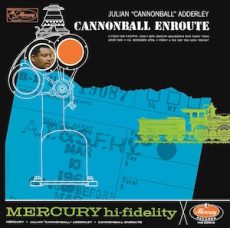
Requisites
Cannonball Enroute ~ Julian “Cannonball” Adderley | By Eddie Carter
The weather outside was frightful because it was raining hard here in Atlanta. After the sun returned, it became a perfect time to hear the smooth alto sax of Julian “Cannonball” Adderley. He enters this morning’s spotlight with a 1961 album, Cannonball Enroute (Mercury Records MG 20616), backed by his quintet of Nat Adderley on cornet, Junior Mance on piano, Sam Jones on bass, and Jimmy Cobb on drums. My copy is the original U.S. Mono release. A Foggy Day by George and Ira Gershwin opens the album. The quintet starts at a medium beat, setting the stage for Cannonball’s lead solo. Nat picks up the pace in a muted reading until his brother returns to lead the ensemble out.
Hoppin’ John by Nat Adderley takes off with Junior’s speedy introduction ahead of the ensemble’s quick melody. Cannonball ignites the opening solo with a furious charge. Nat responds with plenty to say next. Junior follows with a rapid reading, and Jimmy shares the finale with the front line before the quintet makes a quick exit. 18th Century Ballroom by Nat Adderley and Ray Bryant begins with the ensemble’s pretty melody. Nat opens with a solo that’s quite compelling. Cannonball follows with a superb, articulate statement, then Junior gets the last word in an excellent reading leading back to the closing chorus and finale.
The group takes a trip aboard That Funky Train by Nat Adderley next. Sam and Jimmy get the train rolling with their introduction to the group’s theme. Sam has the first solo and walks with conviction. Junior is next with a very down-home presentation. Nat brings up the rear with a muted finale ahead of the reprise, and the rhythm section slowly dissolves into nothingness. Lover Man (Oh, Where Can You Be) by Jimmy Davis, Roger Ramirez and Jimmy Sherman starts Side Two with a solo showcase for Cannonball. The ensemble begins the introduction before the altoist steps in to deliver a tender melody and the song’s only statement until the group wraps it up.
I’ll Remember April by Don Raye, Gene De Paul, and Pat Johnson begins briskly with Jimmy’s introduction ahead of the quintet’s theme. Cannonball gets things going with a swift opening statement. Nat follows with a heated reading; then Junior takes over for a sparkling solo preceding the group’s return for the close. Porky by Cannonball and Nat Adderley is a fun tune that begins with the front line’s collective melody in a medium setting. Nat swings comfortably into the first interpretation; then Sam takes a relaxing turn in the following reading. Cannonball completes the solos with an attractive piece before the closing chorus ends with a Dixieland flavor.
The Way You Look Tonight by Dorothy Kern and Jerome Kern starts with Junior’s introduction to the quintet’s speedy melody. Cannonball surges into the lead solo like a whirlwind, and then Nat makes a blistering statement. Junior steps up next with an accelerated performance, and Jimmy engages in a brief exchange with both horns into the theme’s restatement and climax. It’s unknown who produced the session or who the recording engineer was, but the album’s sound quality is excellent with a clear soundstage.
Cannonball Enroute was Adderley’s fifth Mercury release and his third with this group. The quintet worked well as a cohesive unit but lasted only two years. He would return in 1959 with a new quintet after a brief time with Miles Davis that would become his most successful. If you’re a new or seasoned fan of Julian “Cannonball” Adderley and are in the mood for a wonderful hard bop album, I offer for your consideration, Cannonball Enroute on your next record shopping trip. It’s a great, if overlooked, album in his large discography that’s worth every penny for a spot in your library!
~ Cannonball’s Sharpshooters (Mercury Records MG 20531/SR 60208), Sophisticated Swing (EmArcy MG 36110) – Source: Discogs.com
~ A Foggy Day, I’ll Remember April, Lover Man (Oh, Where Can You Be), The Way You Look Tonight – Source: JazzStandards.com
© 2024 by Edward Thomas CarterMore Posts: choice,classic,collectible,collector,history,instrumental,jazz,music,saxophone
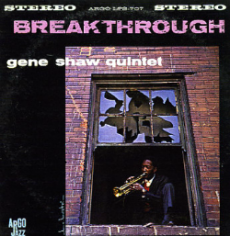
Daily Dose Of Jazz…
Gene Shaw was born Clarence Eugene Shaw in Detroit, Michigan on June 16, 1926. He played the piano and trombone as a child and didn’t begin playing the trumpet sometime around 1946 after hearing Dizzy Gillespie’s Hot House while recovering from injuries sustained in the army.
He attended the Detroit Institute of Music, and studied with pianist Barry Harris. In his hometown he played with Lester Young, Wardell Gray, and Lucky Thompson. His move to New York City in 1956 had him playing with Charles Mingus’s Jazz Workshop a year later and among his credits with the bassist are Tijuana Moods, East Coasting, where he used a Harmon mute, although he was initially wary of using it, given its association with the sound of Miles Davis.
Later that same year over a fight with Mingus, he destroyed his instrument and quit music. Not returning to playing until 1962, Gene formed his own ensemble. He retired again two years later, then returned to music once more in 1968.
As a leader he recorded three albums between 1962 and 1964 on the Argo label titled Breakthrough, Debut in Blues and Carnival Sketches. As a sideman with Mingus he also recorded three albums, East Coasting and A Modern Jazz Symposium of Music and Poetry on the Bethlehem label in 1957, and Tijuana Moods in 1962 on RCA.
Trumpeter Gene Shaw, who was an active member of the Chicago Gurdjieff society and a student of Fourth Way psychology, including its music, died in Los Angeles on August 17, 1973.
More Posts: bandleader,history,instrumental,jazz,music,trumpet
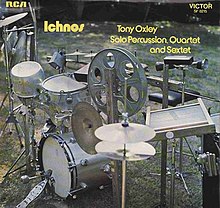
Daily Dose Of Jazz…
Tony Oxley was born on June 15, 1938 in Sheffield, West Riding of Yorkshire, England. A self-taught pianist by the age of eight, he first began playing the drums at seventeen and was taught by Haydon Cook. While playing evening gigs with local dance bands at night, he was sacked from his regular job, at a cutlery-making company, for falling asleep.
During his National Service from 1957 to 1960 with the Black Watch military band he studied music theory and improved his drumming technique. After leaving the army he became a member of a dance band playing for passengers on the Queen Mary and made several trips to New York. When on shore leave Tony visited clubs and heard Philly Joe Jones, Horace Silver, Art Blakey. From 1960 to 1964 he led a quartet which performed locally back home.
1963 saw Oxley playing Saturday afternoon gigs with other aspiring young jazz musicians and working with Gavin Bryars and guitarist Derek Bailey, in a trio known as Joseph Holbrooke. Moving to London, England in 1966 he became house drummer at Ronnie Scott’s, where he accompanied visiting musicians such as Joe Henderson, Lee Konitz, Charlie Mariano, Stan Getz, Sonny Rollins, and Bill Evans until the early 1970s. He was a member of bands led by Gordon Beck and Mike Pyne.
As a sideman he appeared on the John McLaughlin 1969 album Extrapolation and formed a quintet with Bailey, Jeff Clyne, Evan Parker, and Kenny Wheeler, releasing the album The Baptised Traveller. Tony helped found Incus Records with Bailey and others and Musicians Cooperative. The label would go on to release more than 50 albums, received a three-month artist-in-residence job at the Sydney Conservatorium in Australia and joined the London Jazz Composers Orchestra and collaborated with Howard Riley.
Oxley wwent on to join saxophonist Alan Skidmore’s quintet, tutor at the Jazz Summer School in Barry, South Wales, and form the band Angular Apron, and start the Celebration Orchestra He toured and recorded with Anthony Braxton, and began a working relationship with Cecil Taylor. Over the next few decades he joined several bands, recorded a series of albums and ventured into electronic and acoustic percussion music.
Free improvising drummer and electronic musician Tony Oxley died on December 26, 2023.
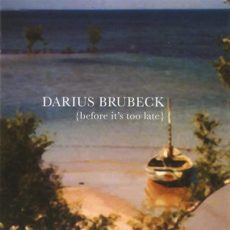
Daily Dose Of Jazz…
Darius Brubeck was born David Darius Brubeck on June 14, 1947 in San Francisco, California into a musical family. His father Dave and mother Iola Brubeck named after his father’s teacher and mentor, French composer Darius Milhaud. Moving from Oakland, California they settled in Wilton, Connecticut in 1960 and ultimately graduated from Wilton High School in 1965.
Darius majored in ethnomusicology and the history of religion at Wesleyan University, graduating cum laude in 1969. While there he composed and performed the music for the film Christopher’s Movie Matinee. During the next decade and into the early 1980s he would go on to lead two groups, The Darius Brubeck Ensemble and Gathering Forces, cross America as a sideman with Don McLean and record two albums with guitarist Larry Coryell. He toured the world and recorded as a member of Two Generations of Brubeck and The New Brubeck Quartet, both led by his father.
In 1983, Brubeck and his South African wife, Catherine, moved to Durban, South Africa, joined the music Department at the University of Natal and initiated the first degree course in Jazz Studies offered by an African university. In 1989, he was appointed as Professor of Jazz Studies and Director of the Centre for Jazz and Popular Music, where he taught until 2005.
A move to London, England in 2005, Darius taught courses at the Guildhall School of Music and Drama and Brunel University. Appointed as a Fulbright Senior Specialist in Jazz Studies in 2007, he taught at Yıldız Technical University in Istanbul, turkey and subsequently at the Gheorghe Dima Music Academy in Cluj-Napoca, Romania, in 2010.
His years in South Africa saw him forming five student/staff bands, record the album The Jazzanians: We Have Waited Too Long to be released in 2024, form the band Afro Cool Conceptwhich toured for nearly 15 years and recorded a live album in New Orleans.
As a composer Brubeck has written music for all types of ensemble, large and small. He has arranged and written an original composition for his father’s 80th birthday, and the Rockefeller Foundation awarded him a residency as a composer at the Bellagio Study and Conference Center in Italy.
Pianist, author, composer, arranger and educator Darius Brubeck, who has had a documentary film made by Michiel ten Kleij titled Playing the Changes: Tracking Darius Brubeck, currently leads The Darius Brubeck Quartet.
More Posts: arranger,bandleader,composer,educator,history,instrumental,jazz,music,piano
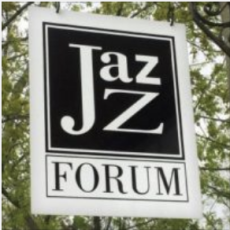
The Jazz Voyager
Heading upstate New York a day early to catch the early summer of nature on the upper Hudson River and ultimately sit in a little place called the Jazz Forum Arts for an evening of great music. Established in 1985, the club has consistently been bringing talent at the top of their game to Westchester County and they have been instrumental in elevating the community’s appreciation for this unique American art form.
This week they welcome the Bill Charlap Trio for a two-day residency with bassist Peter Washington and drummer Kenny Washington taking the stage with the pianist. It’s a jazz super-group that has dazzled audiences for years and they haven’t lost their touch with an interplay and near-telepathic communication ranking among the best. Not only have they received a Grammy Award but also multiple nominations.
The venue is located at 1 Dixon Lane, Tarrytown, New York 10591. For more information you are invited to visit https://notoriousjazz.com/event/bill-charlap-trio-4.
More Posts: adventure,bass,club,drums,genius,jazz,music,piano,preserving,travel



